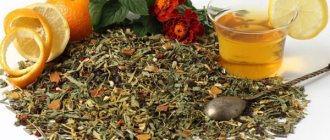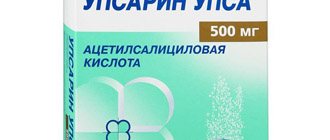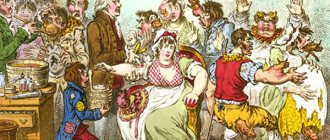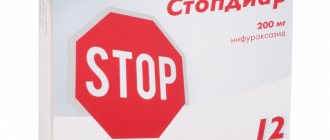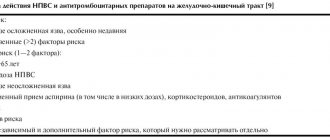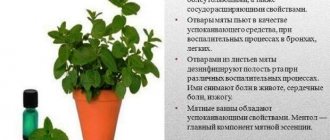Instructions for use (Method and dosage)
1 tablespoon of Breast Collection 2 is poured into an enamel bowl, then poured into 200 ml of cool water and heated in a water bath for 15 minutes. The resulting solution is infused for 45 minutes at normal temperature, filtered, and the remaining contents are squeezed out. The amount of the resulting infusion is increased to 200 ml with clean water and consumed hot, 100 ml up to 4 times a day for 15-20 days. The prepared infusion is shaken before use.
One filter package of the product is placed in an enamel or glass container and poured 200 ml of boiling water, then covered and left for a quarter of an hour. Drink half a glass up to three times a day for 15-20 days.
Release form and composition
Dosage forms:
- medicinal collection (plant collection - crushed raw materials, crushed collection): a mixture of heterogeneous grayish-green particles with light yellow, brownish-green and yellow inclusions, odorless, the taste of the aqueous extract is sugary-sweet, with a feeling of mucus (in a cardboard pack of 30 , 35, 50, 75 or 100 g);
- powder collection: a mixture of heterogeneous whitish-green particles with brownish-yellow and brownish-green inclusions, passing through a sieve with holes 2 mm in diameter, odorless; the taste of the aqueous extract is sugary-sweet, with a feeling of mucus (in a cardboard pack there are 10 or 20 filter bags of 2 g each).
Each pack contains instructions for using Breast Collection No. 2.
Active substances in the composition of the drug:
- coltsfoot (leaves) – 40%;
- large plantain (leaves) – 30%;
- licorice (roots) – 30%.
special instructions
How to choose a chest pack?
Chest expectorant cough collection is available in numbers 1, 2, 3 and 4.
- Medicine number 1 has mainly anti-inflammatory and expectorant effects and is usually used for laryngitis and tracheitis.
- Chest expectorant collection No. 2 has a pronounced anti-inflammatory effect and is prescribed mainly for pneumonia or bronchitis.
- Medicine number 3 contains pine buds, anise fruits, marshmallow and licorice roots, and sage leaves . The product is more often used for pneumonia or bronchitis , as it has an emollient, expectorant and anti-inflammatory effect.
- Medicine number 4 is best used for respiratory diseases accompanied by a non-productive cough. The main effects of this drug are anti-inflammatory, expectorant, sedative and anti-inflammatory.
Medical Internet conferences
Osyaeva A.I.
GBOU VPO Saratov State Medical University named after. IN AND. Razumovsky Ministry of Health of Russia, Department of General Biology, Pharmacognosy and Botany
Comparative pharmacognostic analysis of breast collection No. 2 from various manufacturers
Scientific supervisor: Doctor of Biological Sciences, Professor Berezutsky M. A.
Relevance. Currently, herbal remedies are widely used in the treatment of diseases of the upper respiratory tract. Breast preparations are excellent drugs that become additional means in the treatment of protracted and severe illnesses accompanied by cough, as well as preventive ones when residual effects are treated.
Purpose of the study: to conduct a comparative pharmacognostic study of medicinal herbal raw materials, breast collection No. 2, from various manufacturers.
Material and methods. For the analysis, we used breast collection No. 2 and Lek S+ LLC (crushed leaves of coltsfoot, crushed leaves of plantain, crushed roots of licorice).
Results. During macroscopic analysis, impurities were discovered in the collection (a gastro mollusk shell, small pebbles).
As a result of microscopic analysis, diagnostic signs were found: leaves of plantain (on the upper side of the leaf blade there are polygonal epidermal cells with straight side walls, cells of the lower epidermis with slightly convoluted walls, stomata on both sides of the leaf of anomocytic type, round, surrounded by 3 - 4 epidermal cells, simple and capitate hairs are found), coltsfoot leaves (large polygonal epidermal cells with straight, thickened walls, simple cord-like hairs, often intertwined), stomata are large, oval, surrounded by 4 - 8 epidermal cells (anomocytic type), located on the upper and lower sides of the leaf) , licorice roots (fragments of thin-walled parenchyma, consisting of round or rounded-polygonal cells, often with groups of prismatic crystals of calcium oxalate). The composition of fees and Lek S+ LLC corresponds to what was stated.
Phytochemical analysis of medicinal plant infusions collected by ZAO Zdorovye and LLC Lek S+ confirmed the presence of polysaccharides and triterpene saponins.
In terms of “Packaging” and “Labelling”, the products of both companies meet the requirements of regulatory documentation.
Analogs
Level 4 ATC code matches: Cashnol
Anise oil
Bronchophyte
Pine buds
Pertussin
Bronchosan
Gedelix
Mixture for inhalation
Herbion ivy syrup
Herbion plantain syrup
Herbion primrose syrup
Mukaltin
Sinupret Forte
Dr. Theiss syrup with plantain
Bronchosept
Joset
Thermopsol
Tussamag
Marshmallow syrup
Dry cough syrup
Phytobronchol and the same-name products numbered 1, 3 and 4, Broncho-Theiss, Bronchostop, Tusavit, Eukabal.
Contraindications
Absolute:
- ulcerative and erosive lesions of the gastrointestinal tract;
- age up to 12 years;
- pregnancy and lactation (use is possible only as prescribed by a doctor in cases where the expected benefit is higher than the existing risk);
- individual intolerance to biologically active substances included in Breast collection No. 2.
Some manufacturers additionally indicate arterial hypertension, liver cirrhosis, chronic hepatitis, cholestasis, chronic renal failure, hypokalemia, arrhythmia and diabetes mellitus as contraindications.
Collection option No. 4
Chest collection No. 4 is intended for coughs of various forms: wet and dry. It is made from plants that are natural anti-inflammatory and expectorant agents. Below is the composition of this breast collection:
- Chamomile. Its dried leaves relieve irritation and have a calming effect on the irritated oral cavity;
- Swamp wild rosemary. Prevents the spread of pathogenic bacteria in the throat and mouth;
- Violet petals. Helps eliminate frequently recurring coughing attacks and has a sedative effect;
- Peppermint. Stabilizes the patient’s respiratory system;
- Calendula. Promotes the formation of sputum and improves expectoration during wet coughs.
The main difference between this drug is its expanded composition: for its production, the maximum number of plants is used, which help to heal as quickly as possible. Contraindications to breast collection No. 4 – allergy to the herbs that are contained therein. The use of breast milk No. 4 during pregnancy is permitted under medical supervision.
When to use
Chest fees No. 4 are prescribed for the treatment of bronchitis, laryngitis, severe coughing attacks and diseases of the bronchi (for example, bronchitis). Often breastfeeding number 4 is prescribed to improve the health of a patient with flu and colds. In addition, it is prescribed to relieve runny nose and cough during pregnancy.
How to use
The algorithm for preparing this herbal preparation is practically the same:
- 2 tbsp. herbal mixture should be poured 1 tbsp. boiling water and cover with a lid;
- The liquid must be simmered over low heat for 15 minutes, then removed from the heat;
- The broth should be left for one hour, and when finished, strain through a gauze bandage.
The tincture is taken until complete relief from the disease, twice a day after meals, in half a glass portions. It is better to warm it up before use.
Collection option No. 3
Breast collection No. 3 is made from medicinal plants that are used in the field of alternative therapy. Components of this breast collection:
- Anise. A plant that is used not only as a spice: its infusion promotes expectoration of sputum and prevents the development of pathogenic bacteria;
- Pine buds. Act as a disinfectant, killing pathogenic microbes, and thereby preventing inflammatory processes;
- Sage. The herb eliminates swelling of the throat, which is equally common with wet and dry coughs, and has a sedative effect on the affected areas of the respiratory tract;
- Marshmallow root. Promotes an increase in sputum and accelerates the expectoration process.
Contraindications to the use of breast milk No. 3: allergy to the herbs included in its composition. Also, it should not be drunk by pregnant women, since pregnant women are prohibited from taking medications and preparations containing anise.
In what cases should it be used?
Herbal mixture No. 3 for cough can be prescribed by a general practitioner for acute respiratory viral infections, influenza, lung diseases (for example, pneumonia) and other respiratory ailments.
The use of this medicinal and herbal preparation is equally effective for wet and dry cough.
How to use
To get rid of the disease as quickly as possible, strictly follow the instructions for preparing the drug before using it:
- 2 tbsp. Place the mixture of chopped herbs in a metal bowl and pour 1 tbsp. hot liquid;
- Boil the liquid over low heat for 15 minutes, then let cool;
- Separate the herb from the infusion using a gauze bandage.
The infusion must be stored in a cool place (can be in the refrigerator), and warmed up before use. It is recommended to consume at least 3 times a day in half a glass portions. The standard course of therapy is 3 weeks.
BREAST COLLECTION No. 2 (collection/raw materials)
It’s better to buy it in express bags for more convenient brewing, but I bought it in the form of a loose version, but this is not the most important thing, the main thing is the effect.
This package of 50 grams of herbal ingredients cost me 21 hryvnia. On the package you can get acquainted with the features and some indications for the use of this product, as well as information about "(Ukraine, Zhitomir)
On the back of the package, the method of use and dosage, as well as possible side effects, overdose and other features of use are described in more detail. This product is allowed to be used even by children from three years of age, but only after consultation with a doctor.
Further on the side of the package, the composition of the herbal collection, its dosage form, indications, contraindications, terms and conditions of storage, etc. are indicated.
It is convenient that such herbal remedies can be stored for a long time. This one is up to 3 years, the main thing is to observe the correct storage conditions. On the bottom of the package there is usually a barcode of the product, the serial number of the manufacturer, as well as the expiration date (02.21)
The packaging itself opens in a convenient way, and after opening it can be securely closed using a latch on the lid of the packaging
The package contained such a durable sealed bag with holograms of the manufacturer’s name
This type of packaging is not very easy to open; I had to cut it unevenly. The herbal mixture itself turned out to be quite unusual in appearance. A bit reminiscent of greenish cotton wool with crushed herbal particles, but the aroma is quite pleasant
I brewed the mixture according to the recipe indicated on the package, but poured everything into a cup for convenience.
Afterwards, she insisted and divided it into several doses, diluting it with warm water.
The result was a kind of herbal tea with an unusual taste. Both my daughter and I drank it, not particularly pleasant without a sweet addition, so I started adding a little honey for my daughter, but this made its taste even more unusual and even cloying, although the honey was added literally at the tip of a teaspoon. In general, through our common efforts and my personal example, we drank this tea for four days. The first few days three times a day, the second two days twice a day. I will say that even after the first drink the effect was felt, the child began to cough and gradually the wet cough disappeared. I can tell you for myself that my sore throat and incipient cough also quickly subsided.
After each use of such a herbal drink, you feel a pleasant enveloping effect in the throat, and all the unpleasant symptoms of inflammation immediately disappear, but in order to really get the desired effect, it is recommended to drink the tea for several days for complete recovery. This simple and most importantly affordable remedy helped us faster than expensive advertised syrups, so now I have it in my arsenal and in my medicine cabinet, since the period of colds and illnesses has just begun. I hope that it will not be useful, but if it becomes necessary, I will use it in complex treatment. I also recommend that you take a closer look at such a simple and effective remedy.
Is it possible to drink breast milk during pregnancy?
Breastfeeding can be taken while pregnant, but only under the strict supervision of a doctor. Not all herbs from which these herbal complexes are made have a beneficial effect on the health of mother and baby:
- Breast collection No. 1 is not recommended for use during pregnancy (3rd trimester), since the oregano it contains sometimes causes uterine bleeding;
- Herbal complex No. 2 contains licorice root extract, which lowers the level of female hormones of the expectant mother and, with constant use, can even lead to miscarriage;
- Breast collection No. 3 for coughing attacks contains anise, a spice that is not allowed for expectant mothers.
You can cure a severe cough in a pregnant woman with herbal complex No. 4, which, although it contains a small percentage of licorice root, is not as dangerous for the body of the expectant mother and fetus as previous herbal combinations. In any case, therapy should be started only after prior consultation with your doctor.
